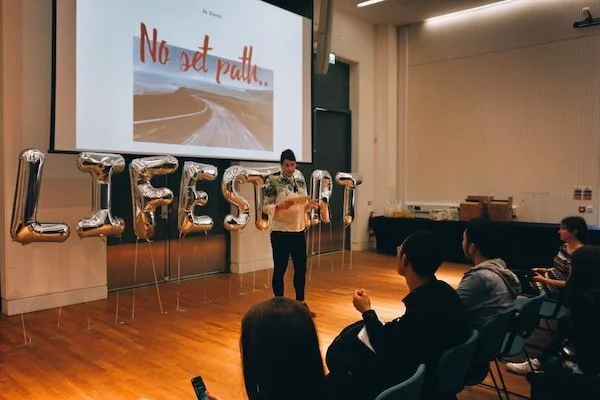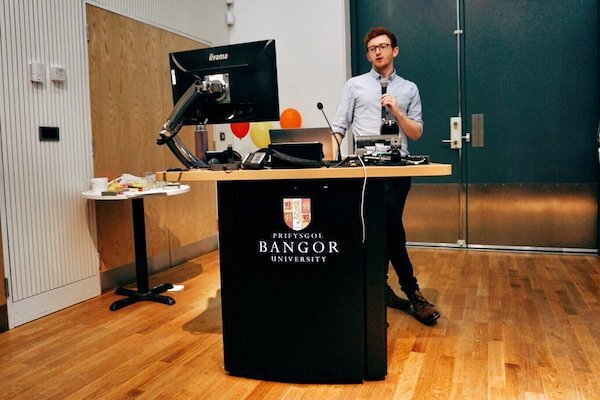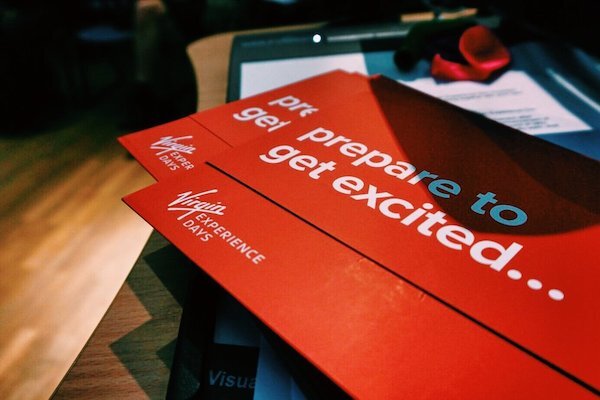LifeStartFest: A case study about organizing a careers event for students.
What would you say are the ingredients of an exceptional event? What has to happen for you to go home and feel like attending an event was worth your time?
To me, it’s always been about the connections I’ve made and the people I’ve met. The conference or networking event could’ve been just average, yet my experience could be elevated if I met someone worth meeting again. In my opinion, it’s something that can’t be fixed with great catering or good speakers. I firmly believe that how we feel at an event is what creates a lasting impression.
Now, let me turn the question around and ask from an events organizer’s perspective: how do you make sure that creating moments of connection isn’t serendipitous and only experienced by a lucky few? How do you help your audience make meaningful connections?
On my latest assignment, I thought about this a lot. I thought about how to make it my mission to help as many people in the audience meet someone and have a conversation that goes beyond small talk. I thought about how I can make sure attendees of the event, which I got to program, feel encouraged to talk with someone they just met again, all while making sure as many attendees as possible have a fun time they’ll remember fondly.
When I was first asked to organize a careers festival on behalf of the organization I work with, Student LifeStart, in Bangor, Wales, I was wondering if that was something I could pull off easily. My first question was: how will I ever get speakers when the budget doesn’t allow to fly some key people in? I knew I’d have to have some speakers, but I also knew I’d have to think of alternative ways to fill an afternoon in a way for students to feel inspired and encouraged to think about their careers differently.
Technically, one could say the event was “branded content.” Sponsored by Virgin Money and Virgin StartUp, the business objective was to create a space to build a positive relationship with the Virgin brand. Given Virgin brands are exceptional to work with, we had a lot of freedom and were able to approach a career event more like what I’d like a career event to be. Those who know my story, and how I went from studying interior architecture to working in digital strategy and writing three books on going freelance on the side, will realize that I’m hardly someone who would tell students to decide early on what to study and how that determines the rest of their lives. If anything, I always tell people to follow their curiosities, be open about their passions, and connect with others who care deeply about the same things. (Probably what Richard Branson would also tell people he meets. :) ) In my belief, there are many ways to making a career, and the more diverse things one knows and is interested in, the more exciting their career can become. Knowing this event was about creating a branded content experience, the feeling the students would leave with was key to how we thought about this experience.
When thinking about careers and the vicious circle students face of having to have work experience in order for them to get work experience, I knew I had to invite speakers who demonstrate different aspects of how to get into the doors of a company and land a job. Simultaneously, and as someone who’s now worked for several years, often it’s the people we meet and who we studied with and have developed a meaningful relationship with that will help us get ahead in life. The students might not yet realize that who will really help them get ahead are the people who sit with them in class or at an event, such as the LifeStartFest. Thus, my personal objective was to help as many attendees as possible make new connections. In the ideal scenario, I wanted all attendees to find a new friend and someone they can collaborate with on future projects, or at best, submit to a LifeStart Challenge as a team.
We had five hours to fill, and I decided to spend more than three of them helping students connect with others in the audience. When you think about it, there’s a lot of content online and at everyone’s fingertips. In my opinion, events nowadays play a different role. The role of an event organizer is no longer so much about curation as it is about facilitating connections.
To give you some background on the framework for this student career event, which we organized under the umbrella of the Student LifeStart Project;
LifeStart is a website and a growing community for students to take real business challenges, evolve their professional skills, and receive mentorship directly from associates who work in top UK companies. The platform’s concept is grouped around multiple pillars, and there are business challenges for students to solve, which can unlock great prizes. It’s insightful content to help understand the world of work, and most of all, it’s the community LifeStart has been created for (and with).
The LifeStartFest seemed like an opportunity to take all that makes LifeStart and bring it into the room. This is what we did and how the event was different from others...
The event started at 2pm. We were ready at the door to sign everyone in. My first goal was to break those apart who arrived as a group. I wanted to create a more inclusive environment and equalize everyone by making sure that they all start out alone in order for those who arrived by themselves not to feel left out. For that, we used 12-piece jigsaws that were all designed in different colors. That was crucial, as we wanted for the students to find their new group quickly. Each of the jigsaws featured a question for the students to answer. Questions such as, “If you could go on a holiday to any decade, where’d you go?” or “If you got paid in happiness, what job would make you rich?”. (Slightly provocative I know) With every new person arriving into the group, they’d have one more piece of the puzzle and would be closer to completing it. The challenge of this exercise to actually work out is that you need people to arrive simultaneously and also not give away too many different puzzles at once while making sure friends don’t have pieces to the same jigsaw. My tip after this event is to start with three to four puzzles and then introduce new colors, and not give away pieces from all puzzles one has prepared for the event. You want for people who arrive to have a welcoming experience and also make sure they can start the conversation you’ve designed quickly.
Once we had everyone in the room, the moderator, Cleo Anderson, set the tone of the event. We didn’t start with the program immediately. Instead, we focused on helping people feel comfortable by once again focusing on the audience instead of the speakers.
When we were planning the event, we were looking for an ice breaker that would work in such a large group. We felt like introducing yourself to the person next to you is something many event organizers ask for, yet you also end up saying the same thing over and over again. I can only speak for myself, but at 32, I’m quite bored by my own answers whenever I’m asked to do this. We decided to introduce the toilet paper game, which works as follows:
Right after Cleo welcomed everyone and explained the objectives for the day, she said we now needed to have a serious conversation. Another helper and I walked along the sides of the rows and handed out one toilet paper roll to the people sitting at the end of each side and per row. While handing out the toilet paper rolls, Cleo said everyone should take how much they usually take when they go to the bathroom. This is, of course, super awkward and everyone breaks out in laughter. The exercise is quite innocent because once everyone has their piece of toilet paper, the audience is asked to say something random about themselves for each tile they took off. Having set the tone of this exercise and making everyone laugh was key, and with this exercise, we knew we had them.
I happened to also be the photographer at this event (talk about wearing multiple hats) and can say there was a significant difference in everyone’s facial expression. I’ve hardly ever taken as many pictures of genuinely happy people as I have during this event.
After the toilet paper game, Cleo asked the audience for the most interesting answers, which helped carry the tone that was set, and we expected for the audience to actively participate in the event. We wanted everyone to know they’ll be heard.
Then, the obvious part of the program began and Cleo introduced the first speaker. We had prepared four talks.
One on the dos and don'ts when applying for jobs online.
One about not having a set path, yet still making a great career.
One given by the former LifeStart winner, who happened to get a job after his work experience week, which was one of the rewards of the LifeStart competition.
And one on using social media and turning side projects into a portfolio to get the job one wants. (I gave that one as you can guess.)
I must admit, I only finalized the program and informed everyone the night before. I was so aware of the flow of the talks and how I wanted people to feel guided through the program that I didn’t leave much up to serendipity. Before the event, and given our speakers were doing this for the first time, we spoke with everyone at least once and helped them shape their story. In my head, the flow of the event went something like this:
Inform (Dos and don’ts...), make them feel safe and understood (No set path...), give them a challenge to solve as a group (to make them feel connected and invested), give them a break (and ice cream), announce the winners after the break (to ensure the students came back), have the last winner and Bangor alumni explain his journey from participating in three LifeStart Challenges and what he’s done to win (to take away the students’ fear), then announce the new round of LifeStart Challenges (the 10 minutes dedicated to the actual branded content), close off with an actionable talk on how to use social media and get the job one would love (which fulfilled the promise of the event), then finish off with pizzas to give everyone a chance to wind down and exchange contact details.
We planned about 20 minutes for all talks. Cleo introduced every speaker before their talk and explained what they did for a living, how we met them, and why we thought they had an interesting story to share with the audience. We made sure to contextualize before we handed over to the speakers. After each session, we opened up to Q&A. Cleo was instructed to have questions prepared for each speaker should no one from the audience ask anything. It was important to us to make sure all speakers feel valued and like people were listening to their stories. Thus, and in case no one would ask anything immediately, we didn’t just want to send the speaker off the stage without giving them a final opportunity to shine.
Given the platform’s main purpose has always been about challenges and proactive thinking, I wanted to recreate that experience in the room and have attendees work in groups by having them solve a mini challenge. This was also a great opportunity to give away prizes and demonstrate that solving a challenge isn’t too hard and that collaboration is key.
We had 50 minutes scheduled for this challenge: students had 20 minutes to brainstorm how they’d improve co-living communication between students who just moved in together, which we believed was a question everyone in the room had to deal with. While students were brainstorming in groups of four or five, we assigned them to a judge by giving them a balloon, asking them to go to the judge who had the same color balloon and present their ideas to them. We made sure each judge had four to five groups to give feedback to. For this exercise, we used the space outside the lecture hall and also in front of the building. We were lucky it was sunny and warm(ish). We asked every judge to select one winner from their groups, which meant we’d give four winning groups Virgin Experience Days Vouchers.
Given each judge finished with their groups at different times, we instructed the judges to let everyone off into their break, but tell the students when they needed to be back in the hall for the winner announcements. Breaks are usually when many students leave, so we wanted to make sure they were invested in the event and had a reason to come back.
The event went on until 7pm. After the last speech, Cleo came back on stage and contextualized and summarized the entire experience. She highlighted what she’s learned to help the audience reflect on what they’ve learned. It was important to us to appreciate the experience and appreciate everyone who joined us for the day. We then invited the attendees to join us for pizza, which gave the students an opportunity to approach the speakers individually and ask them the questions they weren’t able to ask during the Q&A. We also used this time to say thank you to our speakers. Of course, everyone also got a Virgin Experience Day Voucher :)
All in all, creating this event was a rewarding experience and something I’d like to do more often in the future. I’m grateful Virgin Money and Hanzo trusted me fully and allowed me to focus so much on connecting the audience, which also meant they waved off the toilet paper game, which I know raised many eyebrows when we first presented what we were planning to do. For that, I’m thankful.
Should you be organizing an event and want to work with a community strategist, please email hello@mkanokova.com.
This project has since been discontinued as Virgin Money got sold. The links have been removed.













